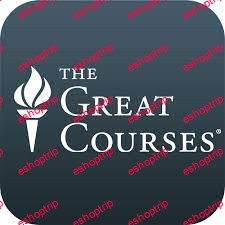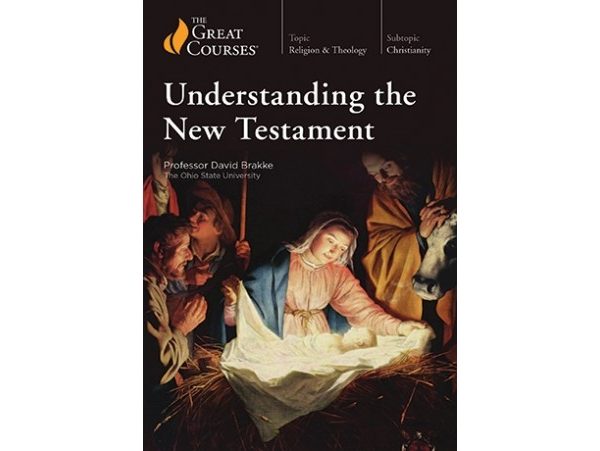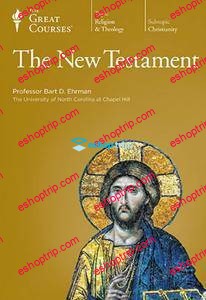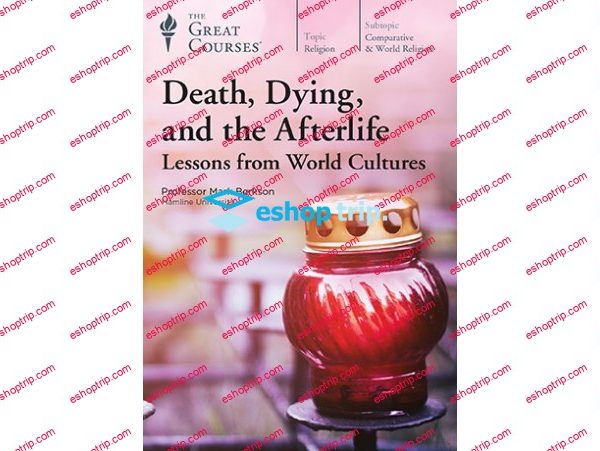1997 | 7 hours and 35 mins | ISBN: n/a , ASIN: B000Z7N8ES | M4A | 208 MB
Lecture One discusses the reasons for studying the great world religions and then introduces the study of Christianity. It concludes with an overview of the remaining lectures contained in Part I.
Lecture Two provides background into the political, social, and religious context in which Christianity emerged. The Hellenistic religions, which emphasized miracles, oracles and immortality, are discussed. Once the stage is set, we are introduced to St. Paul and the earliest Christians.
Lectures Three considers the story of Jesus as contained in the Christian Gospels. The “Synoptic Gospels” of Matthew, Mark, and Luke are studied in order to gain insight into the historical Jesus.
Lecture Four outlines the differences between mainline churches and apocalyptic sects. We also examine the history of early Christianity and how the expectation of a Second Coming, or Parousia, changed with the passage of time.
Lecture Five continues our examination of the history of the Christian religion and the establishment of Eastern Orthodox Christianity. Eastern Orthodoxy emerged as a distinct variety of Christianity in the fourth century, and it broke definitively with Rome in 1040 as a result of disagreements over icon veneration, the role of the pope, and the filioque—the question of whether the Holy Spirit proceeds from the Father alone or from both the Father and the Son.
Lecture Six explains the key tenets of Lutheranism and Calvinism. From there we turn to the study of cyclical waves of revivalism in American Christianity. The revivalist tradition is traced to a need to emphasize the salvation or damnation of individual Christians.
Lecture Seven considers Christian fundamentalism and its origin in the late nineteenth century. The impacts of demographics, urbanization, philosophy, and science on fundamentalist Christianity are discussed at length.
Fundamentalism, which is defined by some as “anti-modernism,” sought to mitigate these impacts, while the mainline churches generally sought to accommodate the views of Immanuel Kant and other modern philosophers.
Lecture Eight continues the study of fundamentalism in America with a discussion of the famous Scopes trial, in which Clarence Darrow squared off against William Jennings Bryan in an attempt to defend John Scopes’s teaching of evolution to high school students. Although Darrow and Scopes lost in court public opinion turned against the fundamentalists, who retreated to what became known as the “Bible Belt.”
Lecture Nine examines the emergence of the “religious right,” as marked especially by the creation of the Moral Majority in 1979. Dramatic shifts have taken place in the protection of religious liberty and the separation of church and state. The new religious right emphasizes political activism at least as much as personal evangelism.
The concluding lecture returns to the broader theme of religious study, and specifically the question of how to explain the similarities and differences among religions. This lecture considers several theories—including that of C.G. Jung—to explain the simultaneous similarities and differences among religions
- 1. Introduction
- 2. The Hellenistic World and the First Christian Communities
- 3. Jesus and the Gospel Traditions
- 4. Growth of the Early Christian Community
- 5. Eastern Orthodox Christianity
- 6. Reformed Christianity and the Revivalist Tradition
- 7. The Origins of Christian Fundamentalism
- 8. Fundamentalism in America: Before and After the Scopes Trial
- 9. The New Religious Right, the Millennial Extreme; And Some Thoughts on Comparative Fundamentalism
- 10. Explaining Religions’ Differences and Similarities











Reviews
There are no reviews yet.